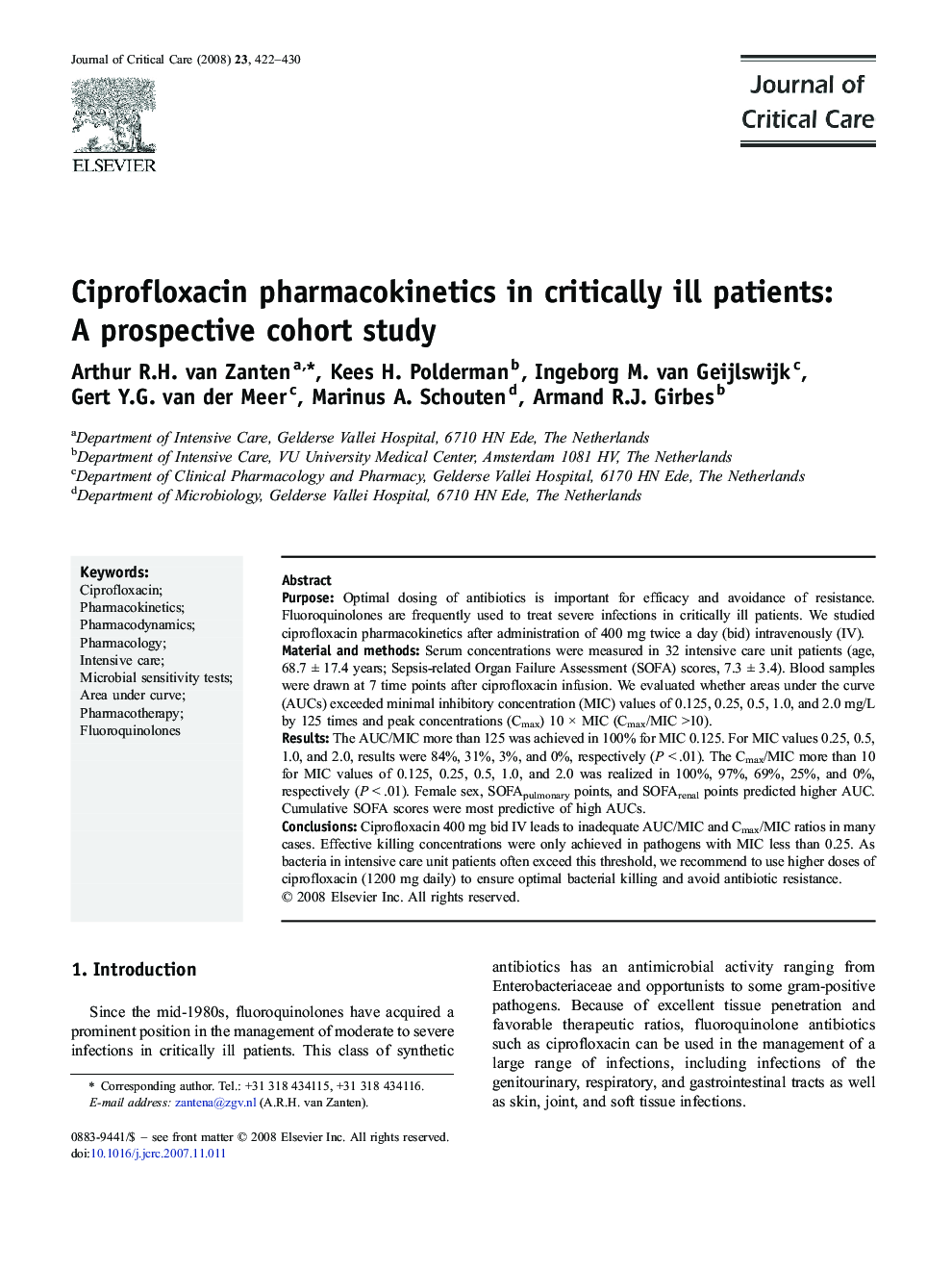| Article ID | Journal | Published Year | Pages | File Type |
|---|---|---|---|---|
| 2765667 | Journal of Critical Care | 2008 | 9 Pages |
PurposeOptimal dosing of antibiotics is important for efficacy and avoidance of resistance. Fluoroquinolones are frequently used to treat severe infections in critically ill patients. We studied ciprofloxacin pharmacokinetics after administration of 400 mg twice a day (bid) intravenously (IV).Material and methodsSerum concentrations were measured in 32 intensive care unit patients (age, 68.7 ± 17.4 years; Sepsis-related Organ Failure Assessment (SOFA) scores, 7.3 ± 3.4). Blood samples were drawn at 7 time points after ciprofloxacin infusion. We evaluated whether areas under the curve (AUCs) exceeded minimal inhibitory concentration (MIC) values of 0.125, 0.25, 0.5, 1.0, and 2.0 mg/L by 125 times and peak concentrations (Cmax) 10 × MIC (Cmax/MIC >10).ResultsThe AUC/MIC more than 125 was achieved in 100% for MIC 0.125. For MIC values 0.25, 0.5, 1.0, and 2.0, results were 84%, 31%, 3%, and 0%, respectively (P < .01). The Cmax/MIC more than 10 for MIC values of 0.125, 0.25, 0.5, 1.0, and 2.0 was realized in 100%, 97%, 69%, 25%, and 0%, respectively (P < .01). Female sex, SOFApulmonary points, and SOFArenal points predicted higher AUC. Cumulative SOFA scores were most predictive of high AUCs.ConclusionsCiprofloxacin 400 mg bid IV leads to inadequate AUC/MIC and Cmax/MIC ratios in many cases. Effective killing concentrations were only achieved in pathogens with MIC less than 0.25. As bacteria in intensive care unit patients often exceed this threshold, we recommend to use higher doses of ciprofloxacin (1200 mg daily) to ensure optimal bacterial killing and avoid antibiotic resistance.
